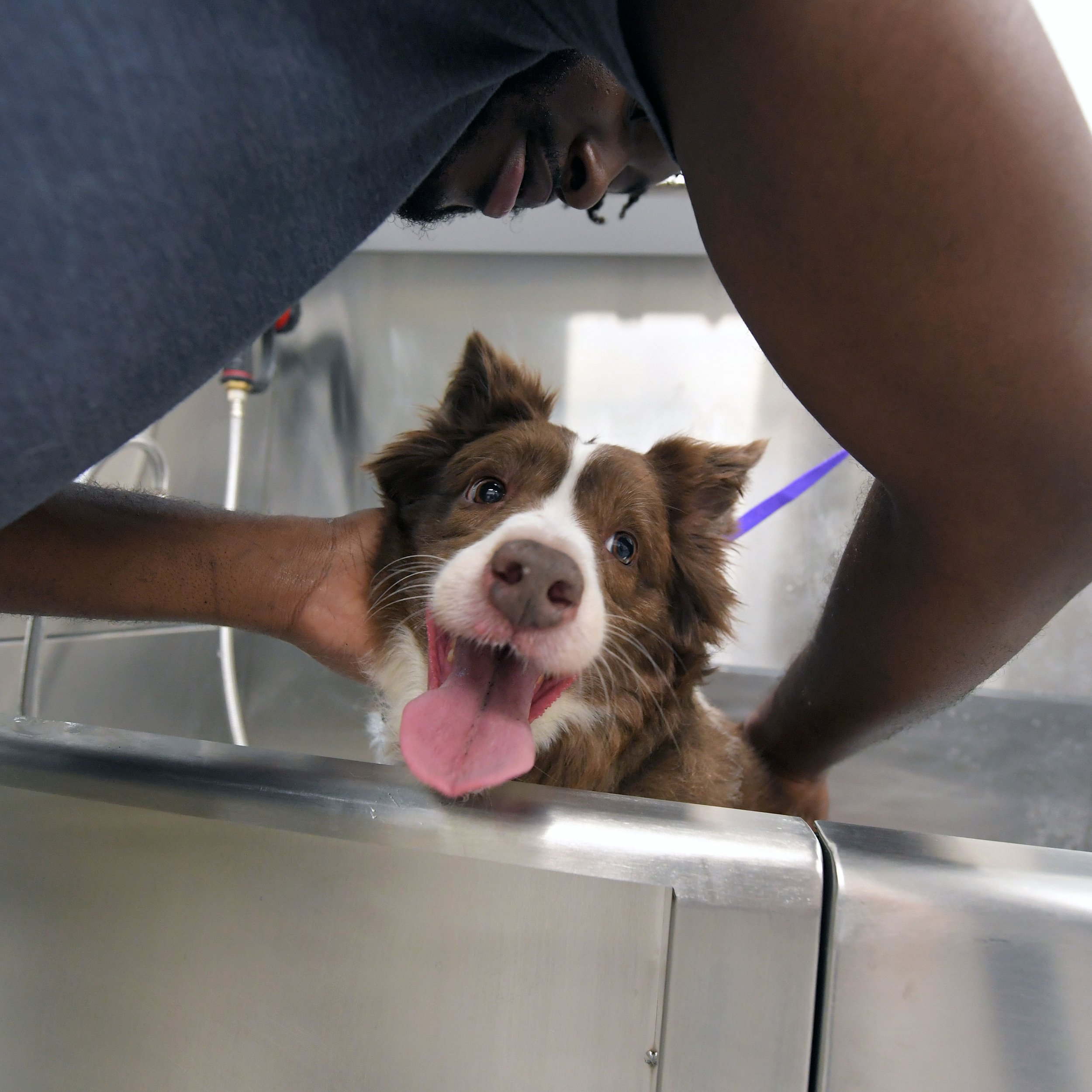Can You Shave a Double-Coated Dog?
A double-coated dog can present some pretty hairy problems for pup parents, but can you shave a double-coated dog?
Key takeaways:
Some dogs have double coats to help protect their skin from outside irritants.
Double-coated dogs present unique challenges for their human parents.
Coat blow and pelting sometimes occur in double-coated dogs and can be dangerous.
There is only one reason to shave a dog to maintain its health.
That means shaving a double-coated dog is almost never a good idea.
Before becoming man’s best friend, dogs were bred to enhance inherent strengths such as hunting, retrieving, and swimming. Their coats are thus designed to work with those strengths, but not all are the same. Small breeds, like Terriers, are good at burrowing holes to retrieve game, so their fur is short and slick to deter burrs and bristles. Labradors have smooth, thick coats that help them swim and shed water.
Some dogs are even double-coated, which presents some challenges that other pups don’t face. If you’ve ever wondered if shaving your double-coated dog would be the best course of action, there are a few things you should know. Let’s go over what a double coat is, the challenges it poses, and whether shaving is ever an option.
What is a double-coated dog?
A double coat has two layers – a soft, downy undercoat with an outer layer of springy, strong guard hairs – which give it extra protection from the weather elements. It works as insulation to stay cool in summer and warm in winter. Many dogs with this type of coat have pink skin that burns easily in the sun. The guard hairs also help protect this delicate skin from overexposure and insects.
Some breeds, such as huskies and chows, have super dense and fluffy undercoats. Other species, such as labradors and retrievers, have slimmer undercoats. The fluffier the undercoat, the more care a pup needs to stay clean and healthy. That’s because the undercoat has a tendency to mat and trap moisture and other harmful irritants near the skin.
What problems can double-coated dogs face?
Coat blow is the shedding process of double-coated dogs. The soft, thick undercoat that keeps these dogs so warm in cold months has to change to keep them cool in the summer. It differs slightly from the way other dogs shed.
Single-coated dogs shed their fur in small poufs as they scratch or after a good brushing. When a double-coated dog blows its coat, giant clumps of fur come off for several days. Pup parents with large dogs can fill garbage bags with blown fur. Coat blow takes regular shedding to a whole new level, and it can be very daunting for humans.
Matting is another problem that many double-coated dogs can face, especially if they aren’t properly cared for. It happens when the undercoat tangles so badly that thick mats of fur develop close to the skin. When the condition becomes so bad that proper airflow is restricted, the coat is pelted and can become a danger. Double-coated dogs that do a lot of swimming or are often in the wilderness can also develop a problem with mats.
Can you shave a double-coated dog?
Some pup parents consider shaving their double-coated dog to alleviate problems with coat blow or matting, but that’s rarely a viable solution. There are many ways shaving can cause more problems. Here’s what to know:
Double coats provide a layer of protection against the external environment for the dog.
Shaving it away removes that protective layer, resulting in insufficient protection from temperature, parasites, sun damage, and wind.
Shaving also damages the coat because it doesn’t regrow in the same fashion.
To protect the skin, the undercoat grows back quickly but the guard hairs don’t. It takes time for them to reach full growth.
The undercoat gets too thick and coarse while it’s waiting for the guard hairs to catch up, and it gathers debris and oils along the way.
If you have allergies, shaving your double-coated dog can exacerbate that response, contrary to popular belief. Three out of every 10 people have an allergy to dog dander. Shaving the fur makes it much easier for dander to release into the atmosphere.
The only good reason for shaving a double-coated dog is if the coat is pelted. Mats can form so close to the skin that the fur cannot be brushed through and airflow to the skin is restricted. Pelted fur leads to yeast infections, hematomas, fecal matting, urine burns, fleas, and irritated skin.
Alternatives to shaving your double-coated dog
The best way to care for your double-coated pup is regular attention to hygiene and coat maintenance using the proper tools. If you notice your double-coated dog has begun coat blowing, use a rake-style tool to get all through the guard hairs into the thick undercoat. This will help loosen dead, tangled fur.
A clean coat inhibits mats and pelting as well as infections from yeast, fleas, and other skin irritants. Regular baths are another big help for double-coated dogs, especially when you combine a shedding treatment with a rake brushing.
The sheer amount of fur and matting presented by double-coated dogs can be scary for pup parents. Shaving can seem like a good idea when you aren’t aware of the dangers it can pose, but regular care and grooming provide exactly what’s needed to keep your dog in tip-top shape all year long.
Keep your double-coated dog healthy with our Monthly Care Club
Regular baths and brushing are part of the routine care services we provide, along with teeth brushing and nail clipping. Add on Scenthound’s shedding treatment and keep your double-coated pup healthy and happy season after season.
Contact our nearest location to make an appointment today.

